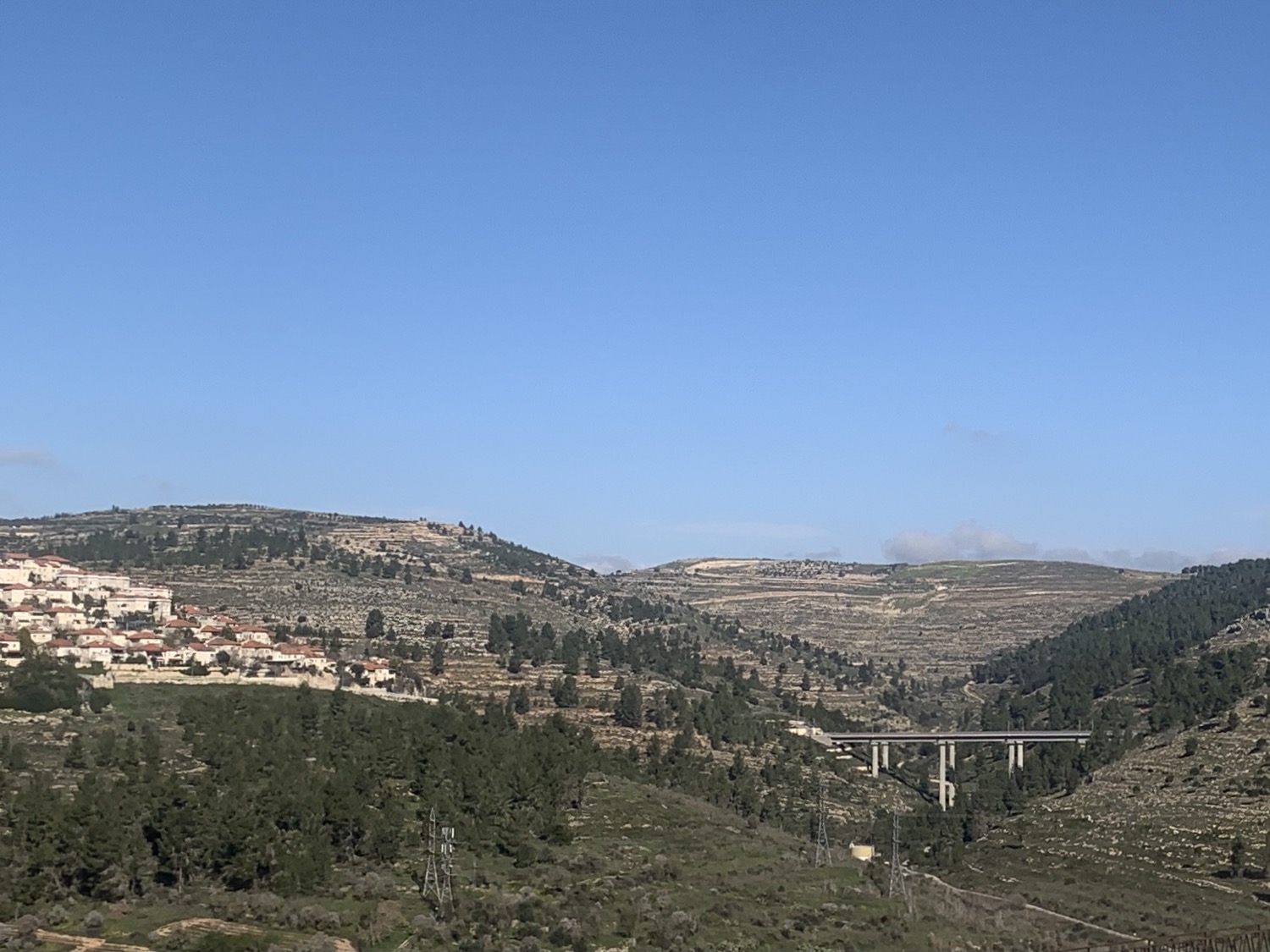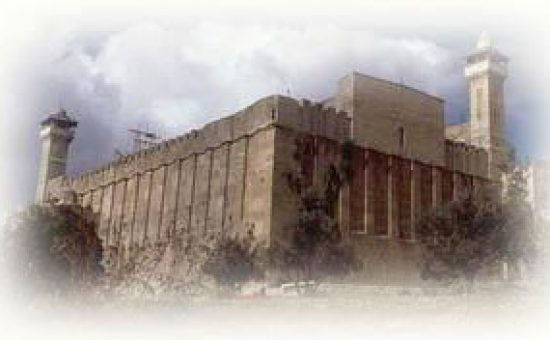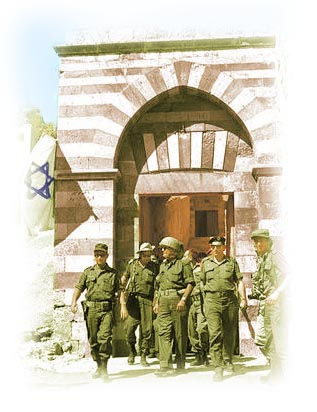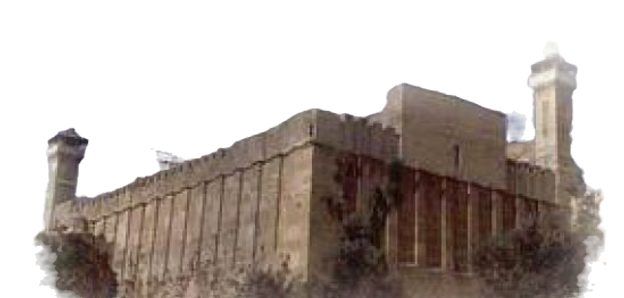Hebron - the first Hebrew city. The soul of the Jewish people
- צבי הורביץ

- May 31, 2023
- 13 min read
Updated: Jun 21, 2023

This is where it all started. In Aloni Mamra in Hebron, Avraham our father chose to settle down. Here Abraham, the first Jew, purchased the first Jewish property, the Field of the Temple, after he saw a light emanating from the cave in the Field of the Temple and the smell of heaven rising from it. When he entered the cave, Abraham also discovered the grave of Adam and Eve there.
The first seeds of the nation sprouted on this barren soil of Hebron. In Hebron arose the forefathers of the Jewish people, mighty men of spirit who placed the moral demand at the center of life as the taste of life - to do good, to bring balm to every sick and tormented person, to feed everyone who fails, everyone who is oppressed and has a hard day.
Hebron - connecting Israel and the worlds
Avraham our father, who symbolizes the essence of goodness, who knew how to see the difference and find the good point in everyone, Avraham who knew how to be on the side of the oppressed even when he himself was having a hard time, chose Hebron as the eternal place for him and his wife Sarah.
Hebron is the oldest Hebrew city in the world and the highest of the Israeli cities, almost 1,000 above sea level. Although in Hebron there is dry and fresh mountain air and fertile land that is blessed with vineyards and olive trees, according to the Midrash, the tarshim in Hebron prevented the land from being cultivated in the past and Hebron was considered the waste of the Land of Israel, therefore Hebron was assigned to graves of the dead. A grave place when visited makes a person reflect on what is important in life and what is trivial, what is eternal and what is fleeting.

Our Jewish connection to Israel in general and to Hebron in particular, began about 4,000 years ago when Abraham our father arrived in Hebron. From then until today, various forces have always tried to expel the Jews from their home, but despite the hardships - the settlement almost never ceased to exist, except for short periods when it was too dangerous to live there.
Abraham our father came to Hebron and settled there (in the 18th century BC). Hebron was then a relatively young and new city, which was first called Kiryat Arba after the giant, named Arba, who lived there.
Avraham lived in Hebron for twenty-five years, until he was forced to go down to Egypt due to a famine that prevailed in the country, but later he returned to Hebron and purchased the field of Machpelah and the cave that became the family burial estate.
The first one was buried in a cave in the Field of Machpelah, Sara Amno, Abraham's wife, and later Abraham himself, his son Yitzchak - who lived in Hebron, Rivkah - Yitzchak's wife, Jacob their son and Leah his wife were brought to burial there.
During the funeral procession of Jacob, called Israel, Esau, his brother, sought to prevent the burial and one of the participants killed him for this. The Haggadah says that his head was rolled off and buried in a cave.
Later in the generations, during the wandering of the Israelites in the desert, Moses sent spies to scout the land and on their return to the desert, the spies described the giants they saw in Hebron. The large bunches of grapes, pomegranates and figs that the spies brought with them on their return from Israel were taken from Hebron.
Caleb ben Yifuna, who was one of the spies, also saw the fortifications and the giants that brought down the spirits of his fellow spies, but he believed that the people of Israel would be able to overcome the obstacles that stood before them.
During the time of Joshua ben Nun (about 1,250 BC) Hebron was conquered and designated as a city of refuge.
In the division of the land into tribes, Hebron received special treatment and was handed over to Caleb ben Yifuna and became the capital of the tribe of Judah and an important regional center.
During the period of the monarchy and the first temple, about 700 years after the lawful arrival of our father Avraham in Hebron, (in 1007 BC), Abner ben Ner, who was the minister of King Saul's army, was murdered in Hebron. The murder, which was against the background of a political conflict, greatly saddened David During those years in Hebron, Avner's grave is located near the Cave of the Patriarchs.
After the death of Abner ben Ner, Ish Bushet, son of King Shaul, was also murdered, who was also buried in Hebron. Saul's kingdom of Israel then came to an end.
In Hebron began (in 1,007 BC) the Davidic dynasty that lasted seven years. David, who was anointed king in Hebron, chose to establish the Kingdom of Israel precisely in this special place that symbolizes the unity and coming together of the Jewish people. A place that has the power to unite the tribes and remind us all to rise above our differences and remember that we are all from those good parents who made their home in Hebron. Only after the return to the roots and the fusion of the rifts, it is possible to move forward to Jerusalem.
Hebron occupied a place of honor even in the later days of the Kingdom of Judah.
David's son Absalom chose to lift the rebellion against his father in Hebron (in 975 BC), but the rebellion was suppressed and Absalom was killed.
Rehoboam ben Shlomo fortified (in 925 BC) the city of Hebron and strengthened its citadels.
About 200 years later, King Hezekiah strengthened Hebron in preparation for the Assyrian invasion and established food reserves there.
After the destruction of the First Temple and the exile of Judah to Babylon (in 586 BC), the Edomites settled in Hebron and about 150 years later, the Babylonian exiles returned to Hebron as their city.
The importance of the city of Hebron to the Jewish people also affected the work of the Temple in Jerusalem, when during the Second Temple period (516 BC) they began to slaughter the victims, only after checking whether the dawn had risen in Hebron, in order to remember the right of the ancestors. Some of the needs of the Temple were brought from Hebron, as were the sheep that were slaughtered Name.
During the Hasmonean period, Judah the Maccabee conquered Hebron (in 164 BC) destroyed its fortresses and burned its towers. Thirty years later, the red inhabitants of Hebron chose to convert to Judaism, after Yochanan Hyrcanus threatened to expel them from Hebron.
King Herod (in 20 BC) decided to build a magnificent building over the graves of the ancestors in order to glorify and strengthen the connection to the roots. The magnificent structure above the Cave of the Patriarchs, whose details and overall design concept are similar to the wall of the Temple Mount in Jerusalem and whose shape is like the Mishkan tent, surrounded by pillars and arches, stands intact to this day, despite various severe natural disasters, and is the only public building in the world that has remained active for so many years.
When the Romans destroyed the Second Temple (in the year 70), they set Hebron on fire and the Jewish settlement that was in Hebron ceased to exist.

During the Mishna period, when the Romans ruled the land, Hebron was close to the center of the Bar Kochba rebellion against the Romans (in 135). After the Romans put down the rebellion, Jews were sold in Hebron into slavery at the fair in "Aloni Mamra".
During the time of the Talmud, when the Byzantines conquered the country (in 330), they built a church in the building built by Herod above the Cave of the Patriarchs and allowed the Jews to operate a synagogue in another corner of the building.
In the following hundreds of years, many Jews continued to come to Hebron and pour out their prayers before the Holy One, blessed be He, standing on the graves of their ancestors, while being helped by the "right of ancestors" - that God remembers the kindness of ancestors and brings a redeemer to their children's children for His name's sake in love.
Even to the place of residence of Abraham and Isaac in "Aloni Mamra" in the north of Hebron, Jews continued to arrive, and Jewish communities developed south of Hebron. Later (in the 7th century) a small Jewish settlement developed again in Hebron that met the needs of the immigrants to the graves of their ancestors.

In 629, the Byzantines brutally murdered the Jews of Hebron.
About nine years later, with the rise of Islam, the Arabs conquered the Land of Israel. The church on the Cave of the Patriarchs was replaced by a mosque. The Arabs then, during the period known as the Arab period, allowed the Jews to continue to pray in the synagogue in the building, but the Jewish settlements in the southern Hebron mountain disintegrated.
In 1100, Hebron was conquered by the Crusaders. The Christians expelled the Jews from Hebron, but Jews were allowed to continue to come and worship the graves of their ancestors. Among the famous people who came to Hebron was Maimonides (in 1166).
With the Muslims' takeover of Hebron in the Mamluk period (in 1260), the Jews returned to live in Hebron, but seven years later, in the year in which the Ramban came to pray in the shade of the tombs of the ancestors and carve a tomb for him there, the Muslims decided to forbid Jews from entering the structure on the Cave of the Patriarchs. Since then and for about 700 years, the Jews were only allowed to pray near the seventh step leading to the structure above the Cave of the Patriarchs, on the grounds that the entry of Jews harms the sanctity of the place for Muslims.

The Muslims added the mosque towers visible today in both corners of the building (in the 13th-14th centuries) to the structure above the Cave of the Patriarchs, as well as the addition adjacent to the Herod structure, the one through which the Jews today enter the structure on the Cave of the Patriarchs. The addition known as "Yosefia" is an addition that the Muslims built on top of a karst water reservoir carved by the Romans, like the visible reservoir in the field of Machpelah.
During these years, the Jewish community in Hebron became a kind of "ghetto" that exists in a Jewish quarter. R. Ovadia of Bartanura, the Mishna commentator, lived in Hebron in 1489. Jewish refugees also came to Monzia who worked in the glass industry.
The Ottoman period was long and difficult, 400 years of terror for the Jews (1517 - 1917) began with a terrible massacre, in which the Turks murdered many Jews, tortured the rest and looted their property.
Three years after the 1517 massacre, a Jewish community returned to Hebron. A group of Jews from Spain, led by Rabbi Melchiel Ashkenazi immigrated to Israel and chose to live in Hebron. Later they bought the land of the "Jewish Yard" from the Karaites. However, due to a severe epidemic that broke out five years after they arrived in Hebron (in 1525), most of the city's Jews fled to Gaza. This was repeated twice later (in 1619 and 1662).
Fifteen years after the first plague, (in 1540) the Jews of Hebron built the synagogue "Abraham Avinu" in its first incarnation in the Jewish Quarter. Jews continued to come and prostrate near the graves of ancestors and among the most famous of them was R. Eliyahu de Vidash, the author of "Rashit Chochma".

Abraham Synagogue
A Jewish community, including Rami Ma'ale rabbis, continued to exist in Hebron in extreme poverty, while being persecuted by decrees imposed on them (in the years 1630-1683). The sages of Hebron were often imprisoned in the prison due to debts, but despite their situation, they did not refrain from establishing yeshivas in Hebron and even admitting and feeding guests, as was the custom of Abraham our father.
Among the famous Jews who lived in Hebron after that, there are the Hida - Rabbi Chaim Yosef David Azulai who even went as a messenger to Europe on behalf of the Hebron community, Rabbi Chaim Yeshua Bejaio known as "Haim the Egyptian" who bought the land of Tel Hebron for the Jewish community. The Middle Rabbi of Chabad called his followers (in 1819) to settle Hebron which would be "the capital of Chabad in the Holy Land".
For a short time, the Turks were expelled from Hebron after Ibrahim Pasha conquered the city (in 1834). Besides 500 residents who were murdered by his soldiers, 12 of Hebron's Jews were also murdered. The Turks returned to Hebron seven years after they were expelled from there and on their return they looted and looted the Jewish property. In those years, many Jews died in Hebron from the cholera epidemic.
The Chabad followers who were in Hebron led the Jewish community's exit from the ghetto and competed economically with the city's elites, purchased land in Hebron and built magnificent buildings there.
Sheikh Abd al-Rahman Issa Amr from the village of Dora near Hebron took over Hebron (in 1849). The Sheikh led a murderous gang whose men raped, extorted, looted and robbed the Jews of Hebron and passers-by on a daily basis for years.
Along with the riots, the Jewish community in Hebron prospered in those years and synagogues, synagogues, schools, a bank, a hotel and the first "Hadasa" clinic in the Land of Israel were established in Hebron, which provided free medical treatment to all the city's residents, including the Arab residents of Hebron.
Great and important rabbis joined the Jewish community of Hebron, among them Rabbi Rabbi Eliyahu Mani, Harif - Rabbi Haim Rahami Yosef Franco Rabbi of Hebron and the "Shadi Hamad" - Rabbi Haim Hezekiah Medini Rabbi of the city.
With the outbreak of the First World War (in 1914), despite the serious diseases, poverty and hunger that once again prevailed in Hebron, and even though the Jewish community in Hebron was damaged and dwindled and the "Torat Emet" yeshiva was closed after the Turks expelled the rabbi and turned the yeshiva in Beit Romano into a police station, despite all this - no The community stopped the tradition of hospitality to Jews who wanted to visit the city of the ancestors.
The city of Hebron was handed over to the British mandate (in 1918) and despite economic improvement, the Jewish community had difficulty recovering and its spiritual condition was poor. The immigration of about 200 students of the "Slobodka" yeshiva to Hebron (in 1924) who established a branch of the yeshiva in the city and to which the leaders of the yeshiva moved, gave a boost to the Jewish residents of the city.
In 1929, the Arabs of Hebron massacred, with apparent cruelty, many Jews and their sons the pharmacist Gershon Ben Zion, who the day before distributed free medicine to them and treated them with devotion. During the massacre, which took place on Saturday morning, 76 Jews were murdered in Hebron with terrible cruelty, including children who were slaughtered in front of their parents, parents in front of their children, dismembered, burned alive and raped. The homes of Hebron Jews were looted. The British expelled the remnants of the world's oldest Jewish community from Hebron.

A year after the terrible massacre, the Jewish settlement in Hebron was renewed and a full community life took place there. Trade and medicine were shared by Jews and Arabs alike, but six years later (in 1936) the British again evicted the Jews of Hebron from their city when the bloody events began in the rest of the country and the British feared another massacre by the Arabs of the Jews of Hebron.
In the War of Liberation (in 1948), with the British leaving the country, the Jordanians occupied Hebron. During this period, the Jordanians forbade Jews to visit the city of their ancestors and the Jewish neighborhoods in Hebron were destroyed. Beit Romano and Beit Hadassah were preserved and used for Arab schools.
The State of Israel liberated Hebron from the Jordanian occupier in the Six Day War (in 1967) immediately after Jerusalem was liberated. The IDF soldiers were greeted by the Arabs of Hebron with surrender for fear of revenge, and the city was liberated without resistance.

The complaints of the Muslim religious dignitaries that the thousands of Jewish visitors who visit the Cave of the Patriarchs cause disruption of the Muslim prayer orders as well as the destruction of the carpets, caused the Minister of Defense Moshe Dayan to close the cave to Jewish visitors during most hours of the day, and completely on Fridays and Saturdays.
About a year after the liberation of Hebron, about 100 people led by Rabbi Moshe Levinger arrived with the aim of renewing the Jewish settlement in Hebron. The group that started by renting the Arab "Park" hotel in Hebron on Seder night, won the support of the Minister of Labor, Yigal Alon. About a month and a half later "Hebron settlers" were moved to live temporarily in the military government building in Hebron.
About half a year later, (on Rosh Hashanah of 1969) the government approved holding a holiday prayer in the Cave of the Patriarchs. In response to the deviation of the Jewish worshipers beyond the time allotted to them, the leaders of the Muslim community sent a letter of sharp protest to the military governor in which they demanded "to prevent Jewish prayer in the mosque, in order to preserve the sanctity of the place and because the Jewish prayer is a wound in the hearts of all believers in the Muslim world.
The city of Kiryat Arba (it is Hebron) was established by the Israeli government (in 1971). The chosen location is east of the Cave of the Patriarchs. The Jewish settlement within the city of Hebron came back into existence (in 1979) after the determination of several families and following a murderous attack in which six yeshiva students were murdered in Hebron. Since then, many Jewish neighborhoods have been added in Hebron and its surroundings, and in Tel Hebron, in impressive excavations, findings from the period of the patriarchs have been revealed.
About thirty years after the State of Israel conquered Hebron, the Jewish State (in 1997) gave up about 85% of the parts of the city of Hebron and handed them over to the sole responsibility of the Palestinian Authority. Today, Jews are prohibited from entering most of the area of the city of Hebron.
From time immemorial and to this day, rioters continue to harass Jews who seek shelter in the shadow of their ancestors. Many Jews gave their lives in Hebron. So are my parents, Rabbi Eli and Dina Horvitz, who were murdered in their home in Kiryat Arba.
Apparently no murderous force in any generation can stop the Jewish aspiration to connect with his ancestors and the compass they are for every person. As my father kindly explained in his article "The most urgent need of our time is education, and education begins with Abraham our father and his spirit that dwells in Hebron."
Yigal Alon summed it up best, who said: "A nation that does not know its past, its present is poor and its future is shrouded in fog."
David Ben-Gurion, the first Prime Minister of the State of Israel, very much understood the centrality of Hebron: "Hebrew history begins in Hebron, in Hebron Abraham made a covenant with my brother Eshkol and my brother Aner, where the first Hebrew army was raised. We must not forget, the beginning of the great kings of Israel was In Hebron, the city to which the first Hebrew came, about eight hundred years before King David. We will make a huge and terrible mistake if we do not settle Hebron, the neighbor and predecessor of Jerusalem, in a large Jewish settlement that will take place in the shortest possible time and this will bring a blessing to the Arab neighbors."


